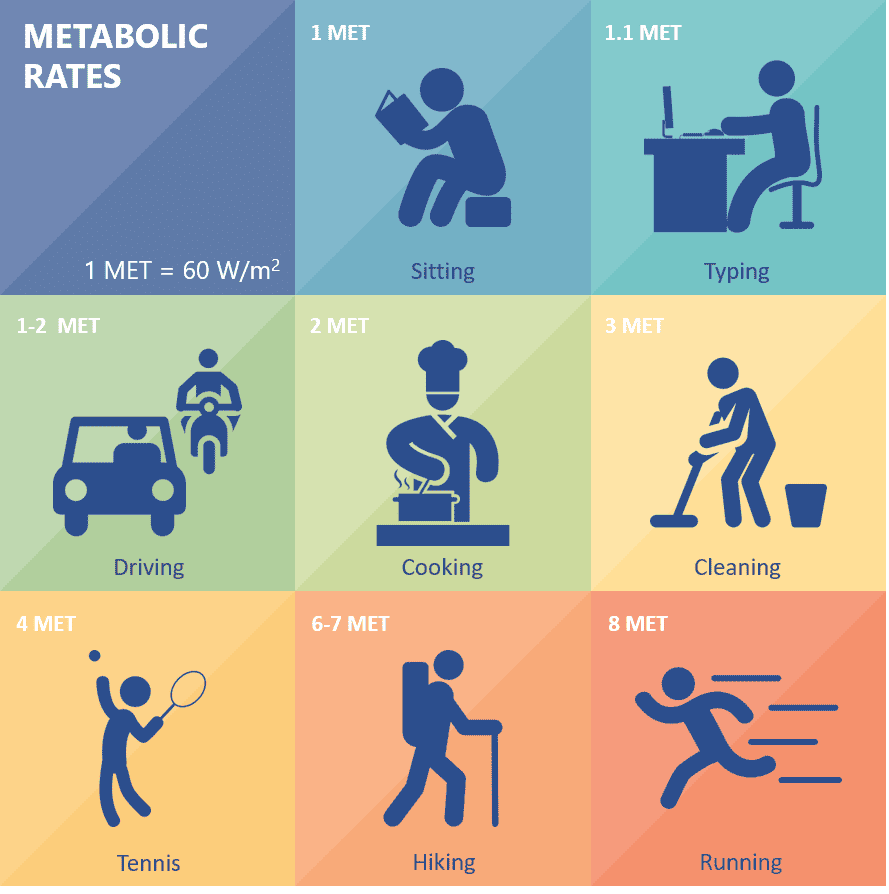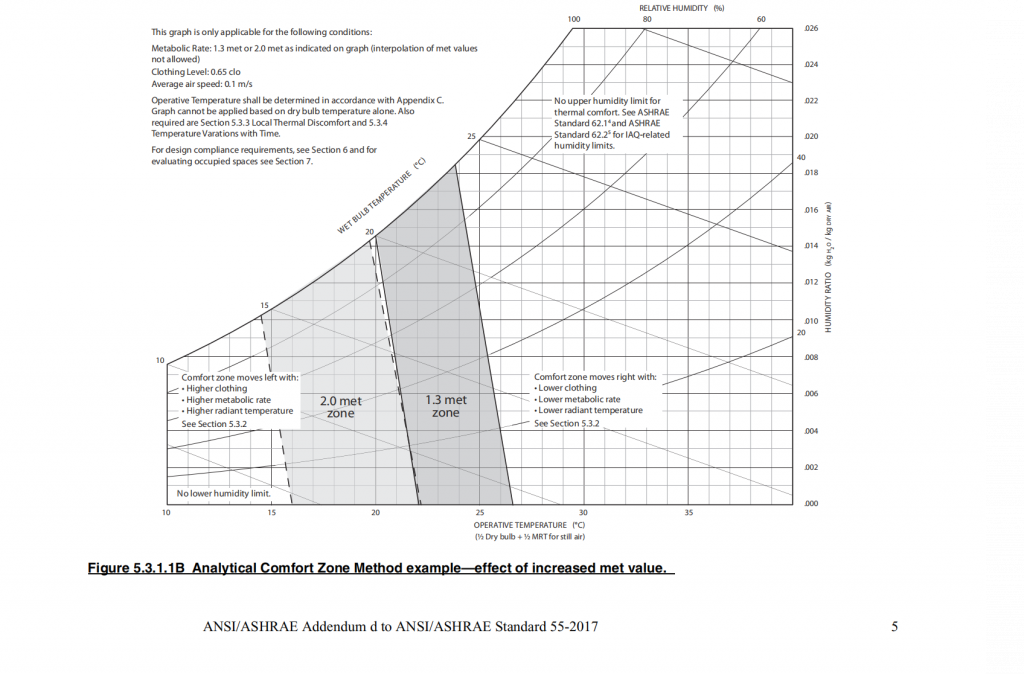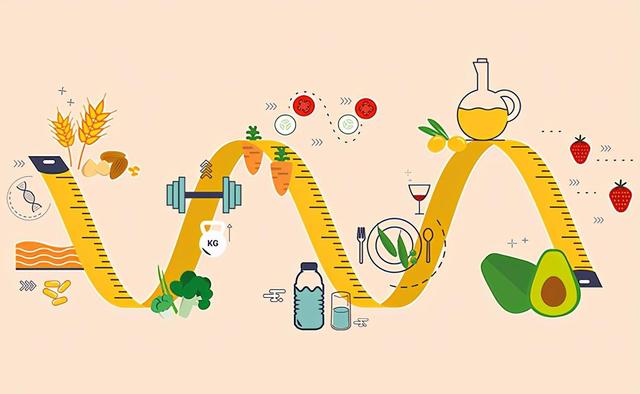Our Bodies As Machines
In this next section of our thermoneutrality series we will be focusing on our metabolism, defining what it’s components are, the factors that influence it, and the role that it plays in determining when we find ourselves in a state of thermoneutrality.
On a very basic level our metabolism is the amount of energy produced by our bodies through the digestion and processing of food. With the energy produced being used to power our essential bodily functions, such as maintaining normal operating function of our organs, as well as more non-essential functions such as the energy needed to get through that late night shift of work or a big workout.
As with so many things relating to the human body determining what one’s metabolism is can be quite challenging. With a lot of interpersonal variables such as: Age, Sex, eating habits etc.. all influencing one’s metabolic rate, with some people, due to their individual circumstances, acting as extreme outliers.
However, for the vast majority of people their metabolism can be determined to a relatively accurate degree by taking a couple of things into consideration. First one needs to determine one’s basal metabolic rate (BMR) and then add some kind of multiplier to account for their activity level (for example MET) to determine their TDEE (total daily energy expenditure) which accounts for the total amount of energy required to maintain their body composition on a day-to-day basis.
Calculating BMR
A person’s basal metabolic rate is the amount of energy required to maintain one’s basic life sustaining functions such as the normal operation of our organs. The main factors influencing one’s basal metabolic rate are: Age, Sex, Height, and Weight. Why do these factors play a role?
Well, age plays a role because on the whole as we continue to age our metabolic activity generally tends to slow down, this is caused due to a general decrease in muscle mass due to shifting hormone levels as well as a decrease in the efficiency of our bodies ability to digest food. These changes cause our BMR to drop and is a large reason for why a lot of people can’t help but pack on some fluff as they age (the same habits/diet that kept us in a healthy state no longer suffice as we age and if we don’t adjust our habits accordingly weight gain is inevitable).
As for sex, multiple studies have found that women tend to have lower BMR’s to males even when accounting for age, weight, height, and activity level differences. Although sometimes this difference can be quite small (3-5%), it is still consistently present.
Height and weight also play a role through dictating the overall energy needed to maintain our masses. With both larger heights and weights correlating to higher BMRs, although for weight there is a difference between fat free mass(muscle+skeleton) and fat mass. With higher fat free masses(larger muscle mass) playing an outsized role in driving up BMR in comparison with fat mass. This is also a reason that more muscular individuals generally need to consume more calories to maintain their bodyweight.
Nowadays there are also plenty of readily available equations one can use to calculate roughly what ones BMR is. One of these equations is The Harris-Benedict equation. This equation takes the previously stated variables(age, sex, weight, and height) into consideration to calculate ones BMR through the use of the equation below:
BMR = 13.397W + 4.799H – 5.677A + 88.362
For men and
BMR = 9.247W + 3.098H – 4.330A + 447.593
For women
For reference see the below hypothetical two individuals BMRS.
1: a 90kg 179cm tall 28 year old male would have a BMR of 1,884 Calories per day
2: 60kg 165cm tall 42 year old female would have a BMR of 1,260 Calories per day.
Per the above equation.
As can be seen by these two examples there already exists a large range for caloric needs from person to person just based on their overall builds.
However, there are still three other factors that can play a large role in determining one’s overall metabolism: those being NEAT(non-excercise activity thermogenesis) which is generally the energy we expend doing small motions like twitching our leg, shifting our posture, or consistently walking to the fridge, (NEAT related habits can increase daily caloric requirements by up to 300 calories at times! Then there is the thermic effect of food(which is the amount of energy required by our bodies to digest the food we consume at a meal usually around 5-10% of the calorie quantity being consumed), as well as our overall activity level(what do we spend the majority of our time doing), which along with ones BMR come together to determine ones TDEE or total daily energy expenditure. This number indicates the amount of calories one needs to consume on a day to day basis to maintain ones body weight, gain weight, or lose weight dependent on ones goals.
Activity level calculators are basic guidelines wherein based on one’s daily habits (sitting at a desk all day, doing manual labor, being a professional athlete) a multiplier is added to ones BMR, ranging from 1.2(for a sedentary lifestyle) to 2x+ for professional athletes. Once an appropriate multiplier has been added to a BMR a TDEE value is created which equates to the overall energy we need to take in per day to maintain our current bodyweights.
So lets take the two hypothetical individuals from before again and see how much of an impact this can make.
The Difference Regular Activity Makes
1: a 90kg 179cm tall 28 year old male would have a BMR of 1,884 Calories per day
- If living a sedentary lifestyle (office job, no active hobby, little to no workouts) then a 1.2x multiplier may be added yielding a TDEE of 2,260Calories。
- If working out 5x a week a 1.8 multiplier may be added yielding a TDEE of 3,391Calories.
2: 60kg 165cm tall 42 year old female would have a BMR of 1,260 Calories per day.
- Working out 1-3 times a week a 1.5 multiplier may be added yielding 1,890 calories.
- Working a full time manual labor job or being a professional athlete may equate to a 2x multiplier yielding a TDEE of 2,520 Calories.
As can be seen from these two examples, although our BMR determines the baseline our actual daily energy needs are heavily dependent on the activities we do throughout our day.
But, How Does This Relate to Thermoneutrality?
It all comes down to heat production. As our metabolisms consume nutrients and produce energy, heat is produced as a by product. How much heat is produced is dependent on the total volume of work being done(how much energy we are consuming). For reference our bodies heat production is usually measured via a term MET (w/m2*h) which has a baseline of 1 MET equaling 58w/m2(hr) representing a seated individual. However, total surface area is also important in determining MET with the average surface area of a person being 1.8m2. Thus a Met of 1 equals (58w/m2*1.8)=104.4w. As the intensity of the task(s) increases so to does an individuals MET.

As can be seen from the above visual depending on the task being carried out the amount of heat we are producing can have a very large range (60-480w/m2)!. Now if we have individuals who have a greater daily TDEE requirement then they would in general be producing more heat as a byproduct. This then in turn also plays a role in determining when said individual would found themselves in a state of thermoneutrality, since the increased heat generation either reduces the need to minimize our heat loss(in cold environments) or increases this requirement(in hot environments).
On a practical level this why an individual with a higher metabolism/TDEE would potentially still find themselves feeling comfortable in cold environments wherein someone with a slower metabolism, lower TDEE would be view it as freezing. Likewise an individual with a higher metabolism may more easily find situations too hot where an individual with a lower metabolism is perfectly comfortable. This is one of the reasons why in office spaces it can be so hard to set a temperature which satisfies everyone’s needs.

This is also clearly shown through the ASHRAE comfort chart(above) with a higher metabolic rate corresponding to a leftward shift of the zone wherein one would be in a state of thermoneutrality whereas a lower MET equates to a rightward shift.
But So What?
Although it is inherently beneficial to have a better understanding of how one’s own body functions and what factors help determine our energy needs at any given time the question really is how can this practically help us?
Well for one, it does give us a better understanding of the role that interpersonal variability plays in the design and implementation of “comfortable” spaces. This understanding then potentially allows us to ensure that spaces are intelligently designed for the activities taking place within them as well as account for the diversity of individuals residing within said spaces. This can take the form of using more reactive and intelligent heating/cooling systems allowing for more personalized control of ones comfort instead of adopting a one size fits all approach. This change can help mitigate not only the creation of uncomfortable spaces, but also optimize energy usage through generating the heating/cooling effect that is actually needed without proverbially nuking a space with heat/cold to satisfy a vocal minority.
In the next post in our thermoneutrality series we will be focusing on clothing insulation and the role this plays in the determination of when we find ourselves feeling comfortable!

